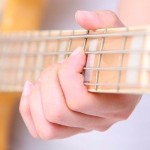Language
Getting A Good Live Bass Sound
The foundation of live bands is the bass guitar. However, it can be tricky getting them right. Added together with the kick drum, bass guitar forms an exhilarating rhythm. There are a range of sounds that bass players have. They range from fretless jazz, rock, sonic onslaught to funk sound. Getting these sounds across while adding weight to the overall sound is a difficult task. Bassists have different playing styles also. They are fingers, slaps or plectrum. Below are ways a live band can engineer their bass guitar to get a good live sound:
 Active And Passive Guitar And Bass Pickups Explained[/caption]
[caption id="attachment_7533" align="alignleft" width="150"]
Active And Passive Guitar And Bass Pickups Explained[/caption]
[caption id="attachment_7533" align="alignleft" width="150"] Ampeg BA-112 Combo Bass Amp Review[/caption]
[caption id="attachment_7108" align="alignleft" width="150"]
Ampeg BA-112 Combo Bass Amp Review[/caption]
[caption id="attachment_7108" align="alignleft" width="150"] Brand Spotlight: Genzler Bass Amps[/caption]
Brand Spotlight: Genzler Bass Amps[/caption]
Height And Angling Of Your Amp
One other crucial action is where to place and the angle on the stage. To note is that the sound of your bass guitar varies on how far you place your Amp. You will listen to less content of your bass if you have it higher on the stage. However, to listen to more of your bass, you should put it on the floor. To also feel the presence of the sound from your bass, tilt the cabinet into a monitor’s angle. Also, you should not stand too close to the amp. Increasing the distance between you and the amp enables you to listen to the lowest frequencies generated.Power
The amount of power you are using on your live performance equates the quality of the sound you will produce. 100 watts of power is recommended however, you might use more power in case of an abrupt shortage. Ensure that you have a soundman who will be able to manage your PA system. The kind of soundman you will hire should also have the ability to distinguish your tone so as to bring the best in the performance.Strings
Many bassists have a perception that getting new bass strings will help improve the quality of their sound. However, contrary to their knowledge, old strings can also produce good sound during your live performance. Ensure that your strings are not clogged with dirt and oil. Also check them to ensure that they are strong, firm and will not snap during your performance. There are many re-known bassists who are said to have never changed their bass strings. One of them is James Jamerson.Go Direct
A direct injection box is crucial for reinforcing the bass guitar. They come in two standards namely passive and active boxes. The passive box does not require power while the active box requires power. Passive boxes have a transformer which has the role of making the signal suitable for the mic on the mixing desk. It is placed in between the bass guitar and the amplifier. There are very many DI boxes to choose from in the market. To capture both the tone of the bass guitar and also that of the amplifier, choose a box that is able to go in between the speaker and the amplifier.Final Thoughts ...
Getting the right and quality sound of your bass guitar in your live performance is important. With the tips above, you should give yourself a solid base on which to work on.Your Turn to Sound Off!
What are some other great live bass playing tips?Let us know in the comment section below!
Other Stories You Might Like ...
[caption id="attachment_7797" align="alignleft" width="150"] Active And Passive Guitar And Bass Pickups Explained[/caption]
[caption id="attachment_7533" align="alignleft" width="150"]
Active And Passive Guitar And Bass Pickups Explained[/caption]
[caption id="attachment_7533" align="alignleft" width="150"] Ampeg BA-112 Combo Bass Amp Review[/caption]
[caption id="attachment_7108" align="alignleft" width="150"]
Ampeg BA-112 Combo Bass Amp Review[/caption]
[caption id="attachment_7108" align="alignleft" width="150"] Brand Spotlight: Genzler Bass Amps[/caption]
Brand Spotlight: Genzler Bass Amps[/caption]
